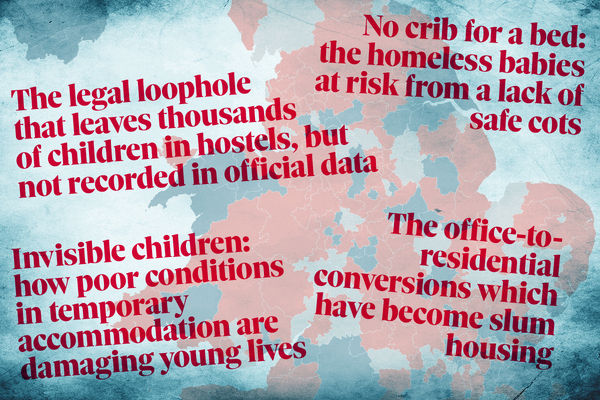You are viewing 1 of your 1 free articles
How Stonewater pushed to tackle overcrowding
Jonathan Layzell, chief officer for customer experience and growth at Stonewater, explores how the landlord exceeded its target to rehouse overcrowded homes, and some of the challenges faced
In 2023-24, Stonewater exceeded its rehousing target for overcrowded homes by improving the living conditions of more than 150 families across England.
This wasn’t just a numerical achievement. It represents a real, life-changing impact for families living in overcrowded conditions. We’ve seen first-hand how providing adequate space can transform lives, from improving health outcomes to fostering a sense of security.
One standout case highlighted the true power of these efforts: a family received an extension to their home, creating space for the father to better care for a child with additional health needs. In their own words, it “changed their lives forever”.
Our overcrowding task group was established to spearhead initiatives that combat overcrowding and improve the lives of customers. Our mid-year 2024-25 figures show a sustained commitment to addressing this pressing issue. So far this financial year, we’ve completed 70 rehousing moves, with eight more currently in progress.
We’re solutions driven, so as well as looking to move families to bigger homes, we’ve implemented storage solutions for several customers and built extensions so others can stay in their homes but with extra rooms or living space. Six properties have also been purchased this year for overcrowded customers to move into, freeing up smaller homes for other customers.
More than 125 families have also moved to Stonewater homes from elsewhere, taking them from overcrowded homes into spaces that better suit their needs.
“We’ve implemented storage solutions for several customers and built extensions so others can stay in their homes”
Despite our success, we still face significant challenges. The rising cost of building an extension places increased financial pressure on us, while demand for relets caused by scheme disposals, large-scale decants and management moves intensifies the need for strategic planning.
We must also continue to build more new homes to suit growing families, which is why a long-term government commitment to funding affordable homes is crucial – bigger homes cost more to build and take up more space on sites than smaller ones.
Yet in 2023-24, less than 6% of the new homes housing associations built had four or more bedrooms, so there’s work to be done across the sector.
Overcrowding also exacerbates issues such as damp and mould. More occupants can cause humidity and condensation, increasing the likelihood of these problems developing. As we know, damp and mould can have serious health implications. By creating better living environments, we’re not just providing physical space but improving mental and physical well-being, too.
Another key challenge involves balancing priorities with local authorities (LAs). While many LAs focus on housing homeless individuals in homes that become available, this can inadvertently perpetuate overcrowding for others.
By moving families into larger homes, we can free up smaller homes better suited for to other groups of people with a whole range of needs. This nuanced approach requires collaboration and dialogue with LAs to ensure that housing needs are addressed comprehensively.
Strong working relationships are essential when working with LAs and other key partners on overcrowding issues and future planning. We must look at the bigger picture and consider how actions can have a ripple effect.
Our initiatives offer benefits that extend far beyond immediate rehousing. By alleviating overcrowding, we help sustain tenancies, providing families with a sense of security and stability.
“By moving families into larger homes, we can free up smaller homes better suited for to other groups of people with a whole range of needs. This nuanced approach requires collaboration and dialogue”
Freeing up smaller homes contributes to more efficient housing allocation, ensuring that resources are used effectively to meet diverse needs. Smaller homes becoming available can enable people in larger homes who no longer need them to downsize.
These efforts align with national research highlighting the detrimental effects of overcrowding on health, education and overall quality of life.
Research from housing charity Shelter underscores how overcrowded living conditions can exacerbate stress and hinder children’s educational development. With the added number of families with children finding themselves in temporary accommodation, overcrowding solutions are becoming even more crucial.
By addressing these issues head on, we’re not just improving housing conditions but realising broader societal benefits.
As 2024-25 unfolds, we’re on track to deliver equally impactful results, with our dedicated taskforce playing a pivotal role in finding innovative solutions and driving progress.
But the work done so far is just the beginning. We’re committed to pushing boundaries and finding new ways to support customers. Housing is about more than bricks and mortar; it’s about creating environments where people can thrive.
While there is always more to do, Stonewater’s achievements in resolving overcrowding serve as a reminder that targeted and strategic efforts can have an impact in addressing some of the most pressing housing challenges.
Jonathan Layzell, chief officer for customer experience and growth, Stonewater
Sign up for our daily newsletter
Already have an account? Click here to manage your newsletters












